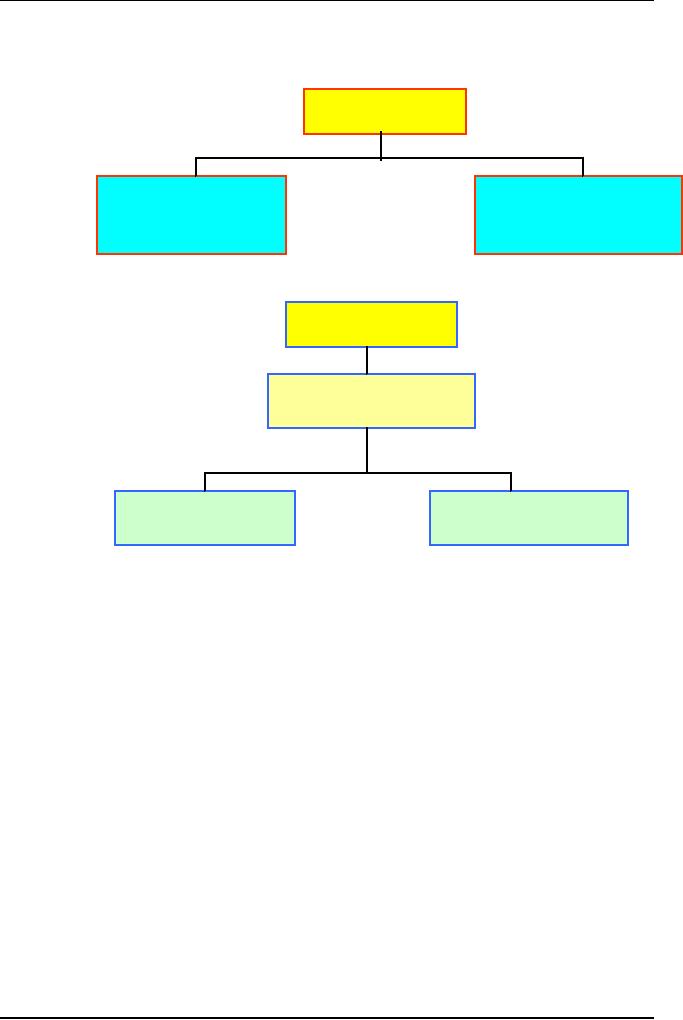 |
Quality Concept, Producing quality software, Quality Control |
| << Risk Management Process |
| Managing Tasks in Microsoft Project 2000 >> |

Software
Project Management
(CS615)
LECTURE
# 42
10.Quality
10.1
Quality
Concept
What
is it? It's
not enough to talk the
talk by saying that soft
ware
quality is
important,
you have to (1) explicitly
define what is meant when
you say 'software
quality,
(2) create
a
set of
activities
that will help ensure that
every software
engineering
Work product exhibits high
quality, (3) perform quality
assurance
activities
on every software project,
(4) use metrics to develop
strategies to
improving
your software process and as a
consequence the quality of.
the
end
product.
Who
does it? Everyone
involved in the software
engineering process is
responsible
for quality.
Why
is it important? You can do it
right, or
you can
do it over again. If a
software
team stresses quality in all
software engineering activities, it
reduces the
amount of
rework that it must do that
results in lower costs, and more
importantly,
improved
time-to-market.
What
are the steps? Before
software quality assurance
activities can be initiated,
it is
important to define 'software
quality' at a number of different
levels of
abstraction,
Once you understand what
quality is, a software team
must identify a
set of
SQA activities that will
filter errors out of work
products before they
are
passed
on.
What
is the work product? A
Software Quality Assurance
Plan is created to
define a
software team's SQA
strategy. During analysis, design, and
code
generation,
the primary SQA work
product is the formal
technical review
summary
report. During testing, test
plans and procedures are produced.
Other
work
products associated with
process improvement may also be
generated.
How
do I ensure that I've done
it right? Find
errors before they
become
defects!
That is, work to improve
your defect removal
efficiency, thereby
reducing
the amount of rework that
your software team has to
perform.
SQA
encompasses:
(1) A
quality management approach
(2)
Effective software engineering
technology (methods and
tools)
(3)
Formal technical reviews
that are applied throughout
the software process
(4) A
multi-tiered testing
strategy
356

Software
Project Management
(CS615)
(5)
Control of software documentation and
the changes made to
it
(6) A
procedure to ensure compliance with
software development
standards
(when
applicable)
(7)
Measurement and reporting
mechanisms.
Software
quality is defined as conformance to
explicitly stated functional
and
performance
requirements, documents, and standards.
The factors that
affect
software
quality are a complex
combination of conditions that can be
measured
based on
data, such as audit-ability,
completeness, consistency, error
tolerance,
and
expandability.1n addition, this
data includes hardware
independence,
software
system independence, modularity,
security, and simplicity.
Software
quality assurance is a planned and
systematic approach necessary to
ensure
the quality of a software
product. Software reviews
filter the product of
all
errors.
Software reviews can be conducted at
all stages in the DLC of a
software
product,
such as analysis, design, and
coding.
Testing
is an important element of SQA
activity. There are various
testing tools to
automate
testing process. The SQA
plan is used as the template
for all SQA
activities
planned for a software
project and includes details of
the SQA activities
to be
performed during project
execution.
SCM is
used to establish and maintain
integrity of software items and ensure
that
they can
be traced easily. SCM helps
define a library structure
for storage and
retrieval
of software items. SCM helps
assess the impact of a
recommended
change and make
decisions depending on the costs and
benefits. SCM needs to
be
performed
at all phases in the DLC of
a software project.
The
various SCM activities are
identifying changes, controlling
changes,
controlling
versions, implementing changes, and
communicating changes. These
activities
are independent of the
supervision of the project or
the product
manager.
This is to ensure objectivity in SCM.
The scope of SCM is not
limited
by code
and includes requirements, design,
database structures, test plans,
and
documentation.
SCM procedures vary with the
project.
10.2
Producing
quality software
As we
have seen, one of the main
problems in producing quality
software is the
difficulty
in determining the degree of
quality within the software.
As there is no
single
widely accepted definition
for quality, and because
different people
perceive
quality in different ways,
both the developer and the
customer must
reach agreement on
metrics for quality' (this
is discussed in more detail
later). The
method of
measuring quality may differ
for different
projects.
357

Software
Project Management
(CS615)
This
problem is discussed in a paper by
Wesselius and Ververs (1990), in
which
they
conclude that complete
objectivity in quality assessment
cannot be achieved.
They
identify three distinct
components of quality:
An
objectively assessable
component
A
subjectively assessable
component
A
non-assessable component
The
quality of a product is objectively
assessable when the
characteristics of the
product,
as stated in the requirements
specification, can be identified.
The
quality of a product is subjectively
assessable when the
characteristics of the
product
comply with the customer's
expectations.
The
quality of a product is non-assessable
when it behaves according to
our
expectations
in situations that have not
been foreseen.
Wesselius
and Ververs suggest that,
for the quality of a
software product to be
assessable,
as many characteristics as possible
should be moved from
the
subjective
and non-assessable components to the
assessable component.
Essentially,
this means that the
requirements specification must
describe as many
measurable
characteristics of the product as
possible.
Experience
supports Wesselius and Ververs'
conclusions. Badly
defined
requirements
are always a source of dispute
between developer and
customer.
Well-defined,
detailed and measurable requirements
minimize disputes and
disagreements
when the development of the
product is complete.
However,
many development methods
have a prolonged interval
between the
specification
of requirements and the delivery of
the product (refer to
Chapter 4
for a
discussion of the software
development cycle). The
determination of quality
should
not be postponed until development is
complete. Effective software
quality
control
requires frequent assessments
throughout the development
cycle. Thus,
effective
quality control coupled with
a good requirements specification
will
clearly
increase the quality of the
final product.
10.3
Quality
Control
Variation
control may be equated to
quality control. But how do
we achieve
quality
control? Quality control
involves the series of
inspections, reviews, and
tests
used throughout the software
process to ensure each work
product meets the
requirements
placed upon it.
Quality
control includes a feedback loop to
the process that created
the work
product.
The combination of measurement and feedback
allows us to tune the
358

Software
Project Management
(CS615)
process
when the work products
created fail to meet their
specifications. This
approach
views quality control as
part of the manufacturing
process.
Quality
control activities may be fully
automated, entirely manual, or
a
combination
of automated tools and human
interaction. A key concept of
quality
control
is that all work products
have defined; measurable specifications
to which
we may
compare the output of each
process. The feedback loop is essential
to
minimize
the defects produced.
10.4
Quality
Control Myths
The
establishment of effective quality
control frequently encounters
various
misconceptions
and myths, the most common
of which is related to the
cost
effectiveness
of quality control. Cobb and Mills
(1990) list several of these
myths,
and
suggest methods of combating
them. Two of the more
prevalent myths
identified
by Cobb and Mills are described
below.
Myth:
Quality costs money. This is
one of the most common myths
(not only in
software
development). In fact, quality in
software usually saves
money. Poor
quality
breeds failure. There is a
positive correlation between
failures and cost in
that it
is more expensive to remove
execution failures designed
into software than
to design
software to exclude execution
failures.
Myth:
Software failures are unavoidable.
This is
one of the worst
myths
because
the statement is partly
true, and is therefore often
used as an excuse to
justify
poor quality software. The
claim that `there is always
another bug' should
never be
a parameter in the design or implementation of
software.
As these
myths lose ground in modern
approaches to software development,
the
demand
for suitable quality control
standards and procedures increases. The
IEEE
issued
their first standard for
software quality assurance
plans in 1984 (IEEE
.1984),
followed by a detailed guide to
support the standard, issued in
1986. The
US
Department of Defense issued a separate
standard 2168 for defense systems
software
quality programs (DOD
1988b), which forms a
companion to the
famous
US DOD
standard 2167A (DOD 1988a) for
defense systems software
development.
The European ISO standard
9000-3, of 1990 (ISO 1990)
gives a
broader
meaning to the term quality
assurance and covers configuration
control
too.
10.5
Resources
for quality
control
When
the SQA mandate includes
configuration control activities,
the required
resources
will also include those required for
configuration control. Merging
SQA
and
configuration control is not
uncommon, and can eliminate some
duplication
of assignments and
activities. Two alternative
organizational charts are
shown in
359

Software
Project Management
(CS615)
Fig.
8.5. Note that for
small projects, merging the
two groups may mean
simply
assigning
both responsibilities to the
same person.
Though
many tools are common to
quality control and configuration
control, few
tools
are specifically designed
for quality control. The
following are some of
the
general
support tools that can be
useful in supporting SQA
activities:
�
Documentation
utilities
�
Software
design tools
�
Debugging
aids
�
Structured
preprocessors
�
File
comparators
�
Structure
analyzers
�
Standards
auditors
�
Simulators
�
Execution
analyzers
�
Performance
monitors
�
Statistical
analysis packages
�
Integrated
CASE tools
�
Test
drivers
�
Test
case generators
These
tools support quality
control in all phases of
software development.
Documentation
aids can provide partially
automatic document writers,
spelling
checkers and
thesauruses etc. Structured
preprocessors (such as the UNIX
utility
lint)
are
useful both to standardize code
listings. And to provide
additional
compile-time
warnings that compilers
often overlook. Early
warnings regarding
possible
execution time problems can be
provided by simulators, execution
time
analyzers
and performance monitors. Substantial
software system testing
can
often be
performed automatically by test suite
generators and automatic test
executors.
All SQA
tools to be used during
software development should be
identified and
described
in the SQA plan. This
plan includes a description of
all required quality
assurance
resources and details of how
they will be applied. Thus, at
the start of
the
project SQA resources can be budgeted and
procured as part of the
required
project
development resources.
360

Software
Project Management
(CS615)
(a)
Project
manager
Configuration
Software
quality
control
control
CC
manage
OC
manager
(b)
Project
manager
Software
quality
assurance
SQA
Configuration
Software
quality
control
control
10.6
Quality
Assurance
Quality
assurance consists of
the auditing and reporting
functions of
management.
The goal of quality
assurance is to provide management with
the
data
necessary to I be informed about
product quality, thereby
gaining insight and
confidence
that product quality is
meeting its goals. Of course, if
the data
provided
through quality assurance
identify problems, it is
management's
responsibility
to address the problems, and
apply the necessary
resources to
resolve
quality issues.
Software
Quality Assurance
Even
the most jaded software
developers will agree that
high-quality software is
an
important goal. But how do
we define quality? A wag once
said, 'Every
program
does something right, it
just may not be the
thing that we want it to
do.'
361

Software
Project Management
(CS615)
Many
definitions of software quality
have been proposed in the
literature. For our
purposes,
software
quality is
defined as:
Conformance
to explicitly stated functional and
performance requirements,
explicitly
documented development standards, and
implicit characteristics
that
are
expected of all professionally
developed software.
There is
little question that this
definition could be modified or
extended. In fact,
a
definitive definition of software
quality could be debated
endlessly. For the
purposes
of this book, the definition
serves to emphasize three important
points:
1.
Software requirements are
the foundation from which
quality is measured.
Lack of
conformance to requirements is lack of
quality.
2.
Specified standards define a
set of development criteria
that guide the
manner
in which
software is engineered. If the criteria
are not followed, lack
of
quality
will almost surely
result.
3. A set
of implicit requirements often
goes unmentioned (e.g., the
desire for
ease of
use and good maintainability). If
software conforms to its
explicit
requirements
but fails to meet implicit
requirements, software quality
is
suspect.
Background
Issues
Quality
assurance is an essential activity for
any business that produces
products
to be
used by others. Prior to the
twentieth century, quality
assurance was the sole
responsibility
of the craftsperson who
built a product. The first
formal quality
assurance and
control function was introduced at
Bell Labs in 1916 and spread
rapidly
throughout the manufacturing
world. During the 1940s,
more formal
approaches
to quality control were
suggested. These relied on measurement
and
continuous
process improvement as key
elements of quality
management.
Today,
every company has mechanisms to ensure
quality in its products. In
fact,
explicit
statements of a company's concern for
quality have become a
marketing
ploy
during the past few
decades.
The
history of quality assurance in
software development parallels
the history of
quality
in hardware manufacturing. During
the early days of computing
(1950s
and 1960s),
quality was the sole responsibility of
the programmer. Standards
for
quality
assurance for software were
introduced in military contract
software
development
during the 1970s and have
spread rapidly into software
development
in the
commercial world
[IEE94].
362

Software
Project Management
(CS615)
Extending
the definition presented
earlier, software quality
assurance is a planned
and
systematic pattern of actions
[SCH98] that are required to
ensure high quality
in
software.
The
scope of quality assurance
responsibility might best be
characterized by
paraphrasing a
once-popular automobile
commercial:
Quality
is Job # 1'. The
implication for software is
that many different
constituencies
have software quality
assurance responsibility-software
engineers,
project
managers, customers, salespeople, and the
individuals who serve within
an
SQA
group.
The
SQA group serves as the
customer's in-house representative.
That is, the
people
who perform SQA must
look at the software from
the customer's point
of
view. Has
software development been
conducted according to
pre-established
standards?
Have the technical
disciplines properly performed
their roles as part
of
the
SQA activity? The SQA
group attempts to answer
these and
other questions to
ensure
that software quality is
maintained.
SQA
Activities
Software
quality assurance is composed of a
variety of tasks associated
with two
different
constituencies-the software engineers who
do technical work and an
SQA
group that has
responsibility for quality
assurance planning,
oversight,
record
keeping, analysis, and reporting. 'If
Software engineers address quality
and
perform
quality assurance and quality
control activities by applying
solid
technical
methods and measures, conducting
formal technical reviews,
and
performing
well-planned software
testing.
The
charter of the SQA group is
to assist the software team in
achieving a high-
quality
end product. The Software
Engineering Institute [PAU93]
recommends a
set of
SQA activities that address
quality assurance planning,
oversight, record
keeping,
analysis, and reporting.
These
activities are performed (or
facilitated) by an independent SQA
group that:
1. Prepares
SQA plan for a
project
The
plan is developed during
project planning and is reviewed by
all
interested
parties. Quality assurance activities
performed by the
software
engineering
team and the SQA group are
governed by the plan. The
plan
identifies
�
evaluations
to be performed
�
audits
and reviews to be performed
�
standards
that are applicable to the
project
363

Software
Project Management
(CS615)
�
procedures
for error reporting and
tracking
�
documents
to be produced by the SQA
group
�
amount of
feedback provided to the software
project team
2.
Participates in the development of the project's
software process
description
The
software team selects a process
for the work to be
performed. The SQA
group
reviews the process
description for compliance
with organizational
policy,
internal software standards, externally
imposed standards (e.g.,
ISO-
900 I), and
other parts of the software
project plan.
3.
Reviews software engineering activities to
verify compliance with
the
defined software
process. The
SQA group identifies,
documents, and tracks
deviations
from the process and
verifies that corrections
have been made.
4.
Audits designated software work
products to verify compliance
with
those
defined as part of the software process.
The
SQA group reviews
selected
work products; identifies,
documents, and tracks deviations;
verifies
that
corrections have been made; and
periodically reports the
results of its
work to
the project manager.
5.
Ensures that deviations in software
work and work products
are
documented
and handled according to a documented
procedure.
Deviations
may be encountered in the
project plan, process
description, -
applicable
standards, or technical work
products.
6.
Records any noncompliance and reports to
senior management.
Noncompliance
items are tracked until
they are resolved.
In
addition to these activities,
the SQA group coordinates
the control and
management of change
and helps to collect and analyze
software metrics.
10.7
SQA
Plan
The
SQA plan serves as the
template for SQA activities
planned for each
software
project.
The SQA group and the
project team develop the SQA
plan. The initial
two
sections of the plan describe
the purpose and references of the SQA
plan. The
next
section records details of the
roles and responsibilities for
maintaining
software
product quality.
The
Documentation section of the
SQA plan describes each of
the work products
produced
during the software process.
This section defines the
minimum set of
work
products that are acceptable
to achieve high quality. The
Documentation
section
consists of:
364

Software
Project Management
(CS615)
Project
document such as project
plan, requirements document, test
cases, test
reports,
user manual, and administrative
manuals
Models
such as ERDs, class
hierarchies
Technical
document such as specifications, test
plans
User
document such as help
files
All
applicable standards to be used in
the project are listed in
the Standards and
Guidelines
section of the SQA plan.
The standards and practices applied
are the
document
standards, coding standards, and review
guidelines.
Example
of the contents of a software quality
assurance plan
1.
Software quality assurance organization
and resources
Organization
structure.
Personnel
skill level and
qualifications
Resources
2.
SQA standards, procedures, policies and
guidelines
3.
SQA documentation requirements
List of
all documentation subject to
quality control
Description
of method of evaluation and
approval
4.
SQA software requirements
Evaluation
and approval of software
Description
of method of evaluation
Evaluation
of the software development
process
Evaluation
of reused software
Evaluation
of non-deliverable software
5.
Evaluation of storage, handling and
delivery
Project
documents
Software
Data
files
6.
Reviews and audits
7.
Software configuration management (when
not addressed in
a
separate document)
8.
Problem reporting and corrective
action
9.
Evaluation of test
procedures
10.
Tools techniques and
methodologies
11.
Quality control of subcontractors,
vendors and suppliers
12.
Additional control
Miscellaneous
control procedures
Project
specific control
13.
SQA reporting, records and
documentation.
Status
reporting procedures
Maintenance
365

Software
Project Management
(CS615)
Storage
and security
Retention
period
10.8
Software
quality metrics
Much
attention has been devoted
to questions associated with
the measurement of
quality.
How do we determine the
extent to which a software
product contains this
vague
attribute called quality?
When is the quality of a
software product high
and
when is
it low?
One of
the more recent developments
in quality assurance (not
only for software)
is the
realization that quality is
not a binary attribute that
either exists or does
not
exist.
Kaposi and Myers (1990), in a
paper on measurement-based quality
assurance,
have stated their belief
that 'the quality assurance
of products and
processes
of software engineering must
be based on measurement 7. The
earlier
the
measurement of quality begins, the
earlier problems will be located.
Cohen et
al.
(1986),
in addressing the cost of removing
errors during the early
phases of
software
development, proclaim the
existence of the famous exponential
law8.
366

Software
Project Management
(CS615)
The
quality of two products can be compared,
and it is perfectly acceptable to
claim
that the quality of one
product is greater than the
quality of another. It is
also
acceptable to measure quality and
deduce the extent of expected
faults based
on the
measured result.
The
set of measurable values associated
with the quality of a
product is referred to
as the
product's quality metrics.
Software quality metrics can be
used to determine
the
extent to which a software
product meets its
requirements. The use of
quality
metrics
increases the objectivity of
the evaluation of product
quality. Human
evaluation
of quality is subjective, and is
therefore a possible source of
disagreement,
particularly between customer and
developer.
A number
of methods for establishing
software quality metrics are
currently being
developed,
though no generally accepted standard
has yet emerged. For
example,
an
initial draft of IEEE
Std-1061 (1990) includes a
detailed discussion of
software
quality
metrics in general, including a
suggested methodology for
applying
metrics,
and many examples and guidelines.
Quality metrics, once defined,
do
indeed
increase objectivity, but
the definition itself is not
necessarily objective
and
greatly depends upon the
needs of the organization
that produces the
definition.
The
basic approach for applying
software quality metrics
requires:
�
The
identification of all required
software quality attributes.
This is usually
derived
from the software
requirements specification.
�
Determinations
of measurable values to be associated
with each quality
attribute.
A description of the method by
which each measurable value will
be
measured.
�
A
procedure for documenting
the results of measuring the
quality of the
software
product.
A set of
many values can be used to
determine the overall
quality of a software
product.
However, a single measure can be
created to represent the overall
quality
of the
software product. This
requires:
�
A
weighted method for
combining the measured
quality attributes into
a
single
measure of quality for the
product.
Some
examples of software metrics
are:
Reliability:
The
percentage of time that the
system is successfully
operational
(e.g. 23
out of 24 hours produces: 100 x
(23/24) percent)
Recoverability:
The
amount of time it takes for
the system to recover after
failure
(e.g.
1hour to reload from backups and 30
minutes to reinitialize the
system)
367

Software
Project Management
(CS615)
User-friendliness:
The
amount of training time
needed for a new user
The
measurement of software quality should
not be performed only at the
end of a
project.
The degree of quality should
be measured at regular intervals
during
development.
Thus, any major reduction in
the overall measure of
quality should
act as a
warning for the project
manager that collective action is
required. High
quality
at the end of the project is
achieved by assuring high
quality throughout
the
development of the
project.
10.9
Some
general guidelines
The
basic software quality
assurance activities cover
the review and approval
of
the
development methodology, the
software and documentation, and
the
supervision
and approval of testing. Other
SQA activities, such as the
supervision
of
reviews, the selection and
approval of development tools, or
the administration
of
configuration control, depend on
the way SQA is adapted to a
specific project.
The size
of the project is usually
the determining factor. The
following guidelines
discuss
some of the parameters to be considered
for different types of
project
when
planning SQA.
�
In small
projects, many SQA
activities can be performed by the
project
manager.
This includes the
organization and supervision of reviews
and
audits,
the evaluation and selection of
development tools, and the
selection
and
application of standards.
�
Test
procedures and testing are always
best when conducted by a
separate
independent
team (discussed later). The
decision on whether supervision
of
testing
activities can be assigned to SQA
depends on many factors,
including
the
independence of the SQA team,
the size of the project and
the 'complexity
of the
project.
�
When
testing is performed by an independent
test team, SQAS involvement
will be
minimal. In most other cases
it will be the responsibility of the
SQA
team to
plan and supervise the
testing of the
system.
�
As a
general guideline, it is usually
undesirable for SQA to be
performed by a
member of
the development team. However,
small projects often
cannot
justify
the cost of a dedicated SQA
engineer. This problem can be
solved by
having a
single SQA engineer
responsible for two or three
small projects (with
each
project funding its share of
the SQA services).
One
additional guideline is based on
the conclusions of Wesselius and
Ververs
(1990)
for the application of effective
quality
control:
368

Software
Project Management
(CS615)
�
The
ability to control software
quality is directly linked to
the quality of the
software
requirements specification. Quality
control requires the
unambiguous
specification
of as many of the required
characteristics of the software
product
as
possible.
369
Table of Contents:
- Introduction & Fundamentals
- Goals of Project management
- Project Dimensions, Software Development Lifecycle
- Cost Management, Project vs. Program Management, Project Success
- Project Management’s nine Knowledge Areas
- Team leader, Project Organization, Organizational structure
- Project Execution Fundamentals Tracking
- Organizational Issues and Project Management
- Managing Processes: Project Plan, Managing Quality, Project Execution, Project Initiation
- Project Execution: Product Implementation, Project Closedown
- Problems in Software Projects, Process- related Problems
- Product-related Problems, Technology-related problems
- Requirements Management, Requirements analysis
- Requirements Elicitation for Software
- The Software Requirements Specification
- Attributes of Software Design, Key Features of Design
- Software Configuration Management Vs Software Maintenance
- Quality Assurance Management, Quality Factors
- Software Quality Assurance Activities
- Software Process, PM Process Groups, Links, PM Phase interactions
- Initiating Process: Inputs, Outputs, Tools and Techniques
- Planning Process Tasks, Executing Process Tasks, Controlling Process Tasks
- Project Planning Objectives, Primary Planning Steps
- Tools and Techniques for SDP, Outputs from SDP, SDP Execution
- PLANNING: Elements of SDP
- Life cycle Models: Spiral Model, Statement of Requirement, Data Item Descriptions
- Organizational Systems
- ORGANIZATIONAL PLANNING, Organizational Management Tools
- Estimation - Concepts
- Decomposition Techniques, Estimation – Tools
- Estimation – Tools
- Work Breakdown Structure
- WBS- A Mandatory Management Tool
- Characteristics of a High-Quality WBS
- Work Breakdown Structure (WBS)
- WBS- Major Steps, WBS Implementation, high level WBS tasks
- Schedule: Scheduling Fundamentals
- Scheduling Tools: GANTT CHARTS, PERT, CPM
- Risk and Change Management: Risk Management Concepts
- Risk & Change Management Concepts
- Risk Management Process
- Quality Concept, Producing quality software, Quality Control
- Managing Tasks in Microsoft Project 2000
- Commissioning & Migration